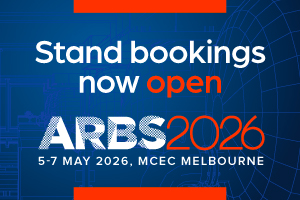European tech company Magtor has developed a linear compressor that could cut energy use by 30 per cent and eliminate power spikes on start-up, making it a candidate to replace traditional rotary-based technology.
Identified as a key sustainable solution by the Solar Impulse Foundation, and presented as one of the “investment ready” cleantech ventures at the recent COP26 Superpitch event, the compressor is based on the Magtor electric motor technology, which uses long-distance magnetic attraction and repulsion to deliver linear power in both directions, with characteristics suited to pumping and compression requirements.
The motor is oil-free, as well as being smaller and lighter than reciprocating-piston based technology. According to the company, it also has fewer parts and less complexity, as well as shorter and cheaper production and assembly lines.
HVAC&R News asked Magtor co-founder and CTO Jeremy Hein about the new design.
Was the compressor designed specifically for the HVAC&R sector?
The heating and cooling industry was absolutely not in our sights when we started the Magtor project. We initially intended to deliver a new kind of “electromagnetic piston” converting electricity to linear mechanical motion by using “long distance” magnetic attractive and repulsive forces between components that are always aligned and facing each other.
It was when we wanted to test the Magtor motor that we came up with compression as a way to apply a load on the motor while effectively using its key characteristics. Indeed, the force profile delivered by Magtor perfectly fits a compression requirement with the peak force being delivered at the end of the stroke, exactly what is required within the context of a piston moving inside a compression chamber.
At low power levels, the motor and compression side are tightly integrated, and we ended up using the same dimensions for the piston and compression chamber as those used in a standard reciprocating compressor for fridges, while directly mounting valve kits from this industry. And, by connecting one set of these components on both sides of the Magtor motor, this resulted in a double-acting linear compressor: the Magtopressor.
This also pointed us to other benefits of our technology such as using the same electrical circuitry for starting up and operating as well as using a single coil: no start-up dedicated circuitry or switching mechanism, no start-up power peaks, etc.
Is there a particular application that you believe this compressor is best suited to?
The core of our technology is the linear electric motor, which provides a new way to move the piston found in reciprocating-piston compressors and pumps and is, therefore, a building block to enable existing technologies to reduce their electrical consumption.
It comes with the additional benefit of delivering instantaneously the required power from start-up, without the need for additional electrical energy and without delay, contrary to “slow start” systems. This will make it particularly suited to battery-backed or off-grid power systems.
We are currently focusing on small power applications especially within the fields of air/water pumping, air compression and vapour-compression cycles for products in the domestic and small commercial refrigeration, as well as small domestic air conditioning and heat pumps. We will be scaling up its power capabilities over time to industrial levels.
How do you see this design reaching the market – as a drop-in solution or as a component in new equipment?
Well, here the market will provide a response. If we consider a compressor as a black box having inlet and exhaust pipes (and one for charge/discharge), our goal is to deliver Magtopressors providing the same interfaces that can operate with the same charge of refrigerant and under the same pressure requirements. There will be use cases where it is worth upgrading existing installations, but they will more likely be incorporated into new equipment.
What has been the response from the industry so far?
Although anticipated, we have up to now received two opposite responses from the industry. On the one hand, the response from compressor manufacturers has, to date, been a deafening silence. On the other hand, we are receiving numerous enquiries from manufacturers keen to integrate Magtopressors into their products. This is especially true within the commercial refrigeration, the domestic air conditioning, and the heat pump sectors.
Furthermore, we also have a lot of traction from other industries that are users of heating and cooling products and who are looking for more efficient solutions: data centres, the shipping industry, e-vehicles, aquaculture or hydroponic companies, just to name a few.
Finally, we have also been contacted by companies and start-ups working on alternative technologies, but which are all built onto existing compressors that turn out not to be particularly well adapted for their requirements and, facing non-proactive suppliers, these companies are coming to us with very interesting collaboration proposals. Here there are very promising synergies and amazing technologies that can be built up into dramatically more efficient products.
What was the response at the COP26 Superpitch event?
The COP26 Superpitch event was a fantastic opportunity to showcase our technology and attract the world’s attention. This was also a clear demonstration that, supported by top companies and entrepreneurs, many technologies already exist and offer real solutions to reduce mankind’s environmental footprint and enable it to find a balance with its ecosystems.
Of course, this was also a fund-raising event and we made good connections with potential investors and partners. We are still dealing with the subsequent flow of enquiries and follow-ups.
What comes next?
As we are now actively working on our next generation of linear compressors for vapour-compression cycles, we would welcome any feedback or constructive criticism. Don’t hesitate to get in touch with us.
Those interested can contact Magtor through www.magtor.tech, through the company’s Linkedin page, or via email.
 Mark Vender
Mark Vender


Leave a Reply to Martin Cancel reply